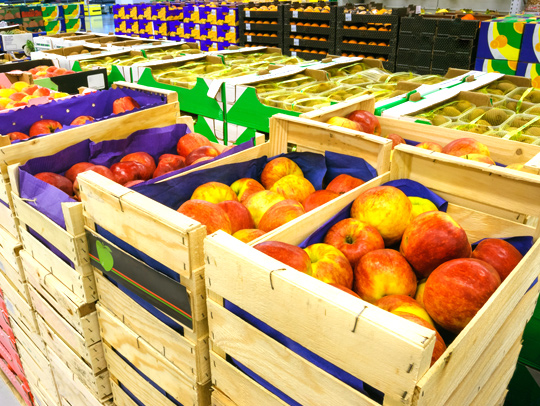Food-Safety Practices and Rule Coverage Vary Among Post-Harvest Handlers of Fresh Produce, ERS Survey Finds
September 8, 2022 | 2 min to read

After Congress passed the Food Safety Modernization Act (FSMA) in 2011, the U.S. Food and Drug Administration (FDA) created rules to better prevent the spread of foodborne illness. The rules pertain to nearly every aspect of the food supply chain: food as it is grown, harvested, and packed on farms; food as it is processed after harvest; and food stored, transported, and handled by distributors and retailers. Two of those rules are the Preventive Controls Rule, which covers facilities that process commodities into different products, and the Produce Safety Rule, which covers farms that grow fruits or vegetables and may also perform post-harvest activities such as sorting, washing, or packing. For produce, the supply chain is made up of a diverse variety of operations, some of which were more prepared for the new food safety rules than others.
To evaluate the fresh produce industry’s preparedness for the new rules prior to implementation, USDA, Economic Research Service (ERS) researchers conducted a survey of fresh produce post-harvest operations with USDA, National Agricultural Statistics Service in 2015. The Preventive Controls Rule went into effect in 2016, and the Produce Safety Rule was implemented in 2017. ERS researchers used the survey to describe FSMA readiness among five types of U.S. operations that handle post-harvest fresh produce.
The Preventive Controls Rule generally carries more stringent requirements for food-safety practices than the Produce Safety Rule, such as requiring a written food-safety plan analyzing hazards and risk-based preventive controls. ERS researchers found that even though an operation would be covered by the less stringent Produce Safety Rule, an operation specializing in growing produce was more likely to meet the standards in the Preventive Controls Rule than a non-specialized operation. Specifically, food-safety practices required in the Preventive Controls Rule were most commonly reported by operations that specialized in processing (55 percent) or in growing (46 percent) compared to operations that did not specialize and grew produce as well as processed it (38 percent).
To read the rest of the story, please go to: USDA ERS
